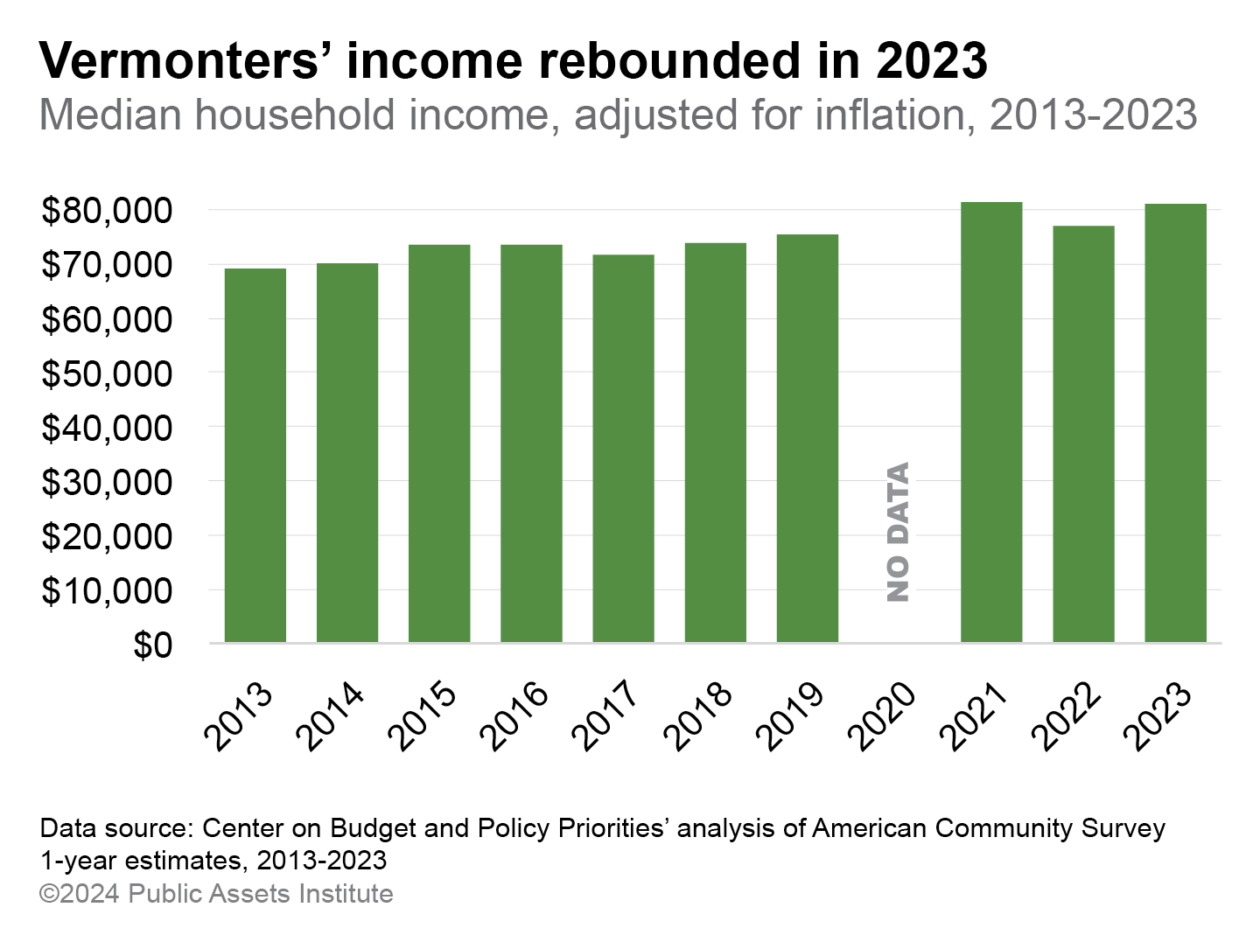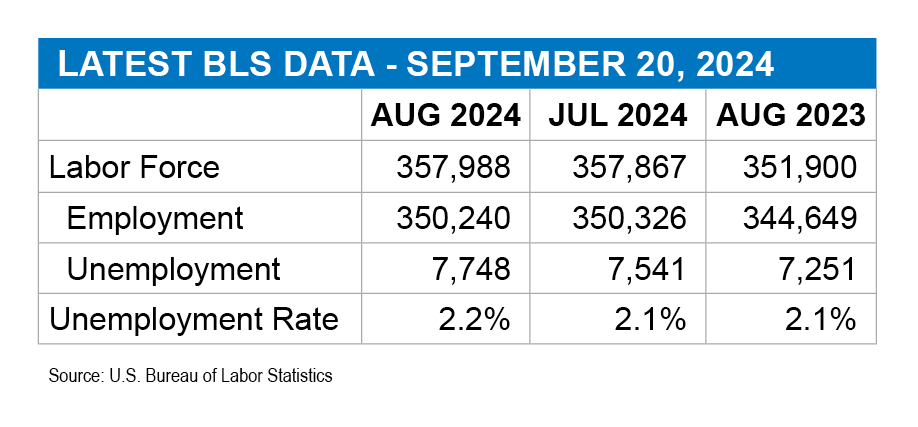Vermont’s median income and workforce both grew
Vermont median household income rose to $81,211 last year—a 5.4 percent increase, after adjusting for inflation. Half of Vermont’s 280,000 households earn less than the median and half earn more. The rebound followed a drop in real income—that is, a loss of buying power after adjusting for inflation—in 2022.
The one-year increase led the other states. Vermont also saw growth of 7.8 percent in median household income from 2019, before the pandemic, through last year—the nation’s greatest rise during that period.
This month
Vermont’s labor picture remained largely unchanged in August. The unemployment rolls increased, but so did the labor force—people with jobs or unemployed and actively looking for work. So perhaps more Vermonters were feeling optimistic about finding a job but had not yet found one. Vermont’s workforce rose for the 46th month in a row, the longest streak in nearly 30 years. The number of nonfarm payroll jobs fell in August by about 400, to 315,600. But in the last year, Vermont employers added more than 6,000 jobs.


